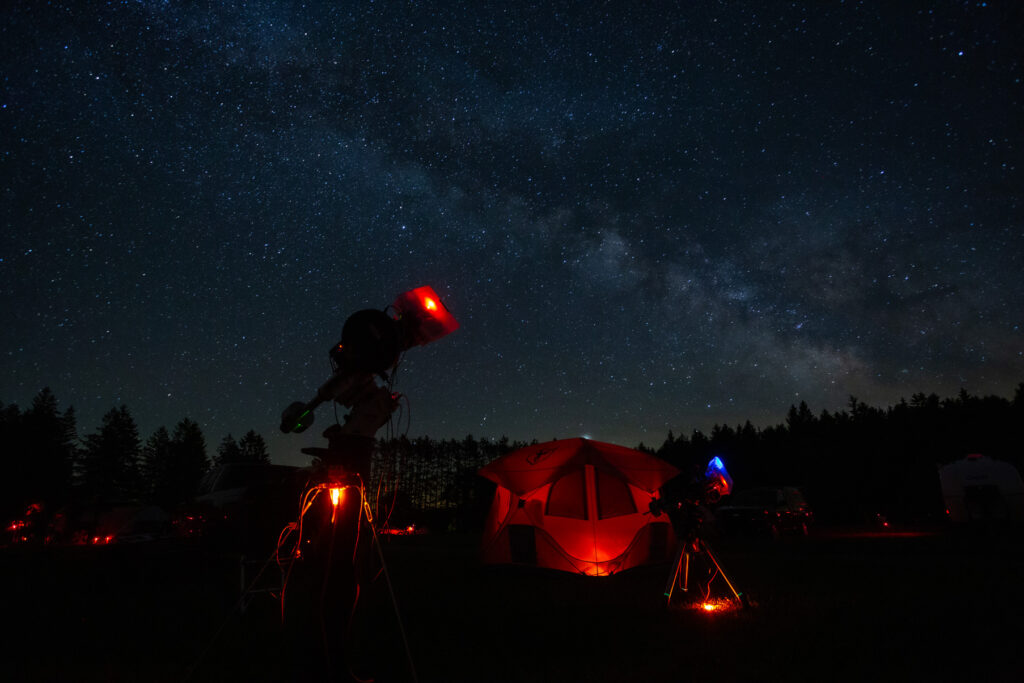
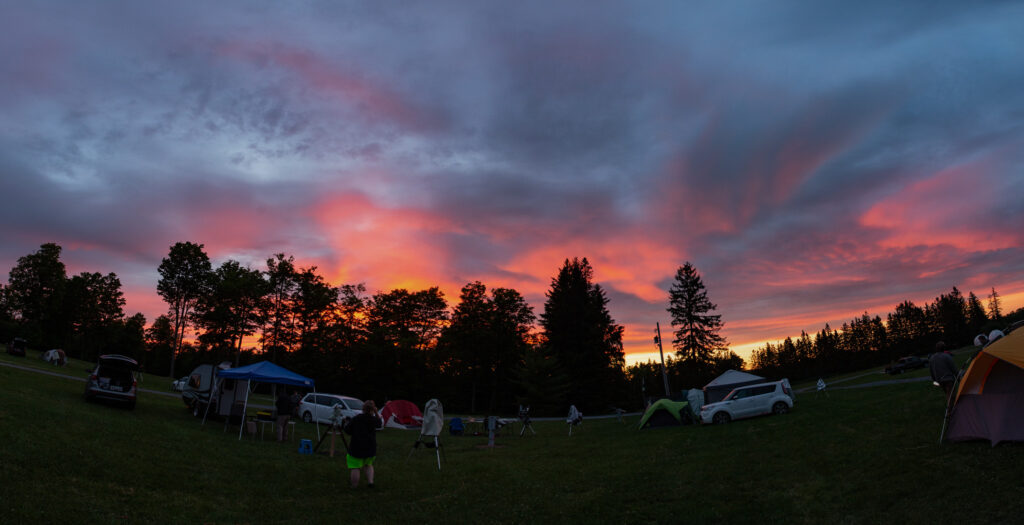
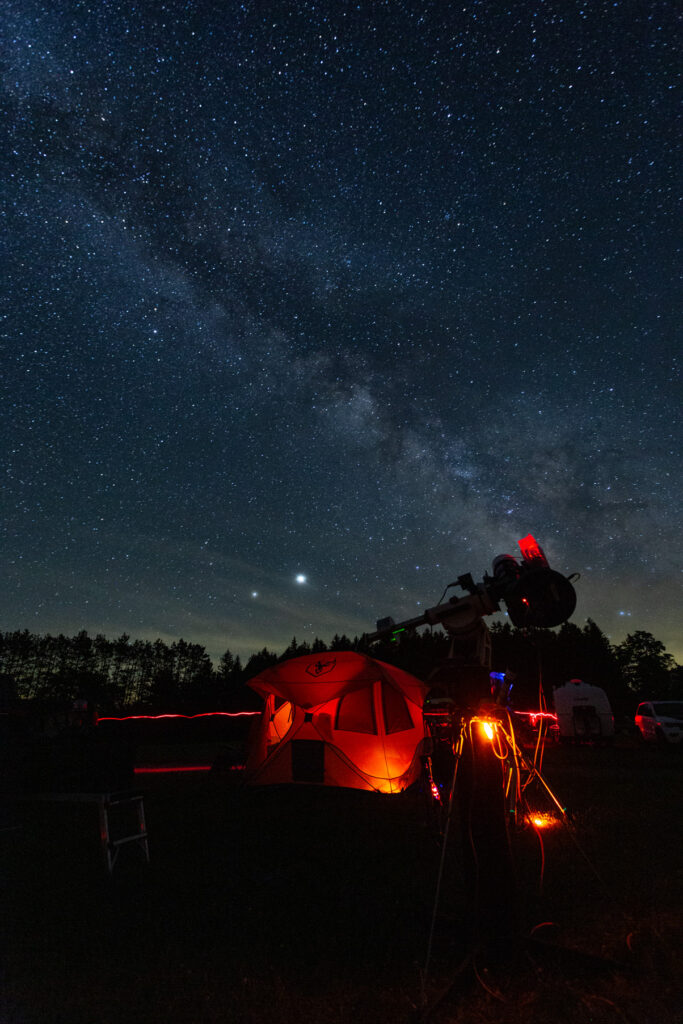
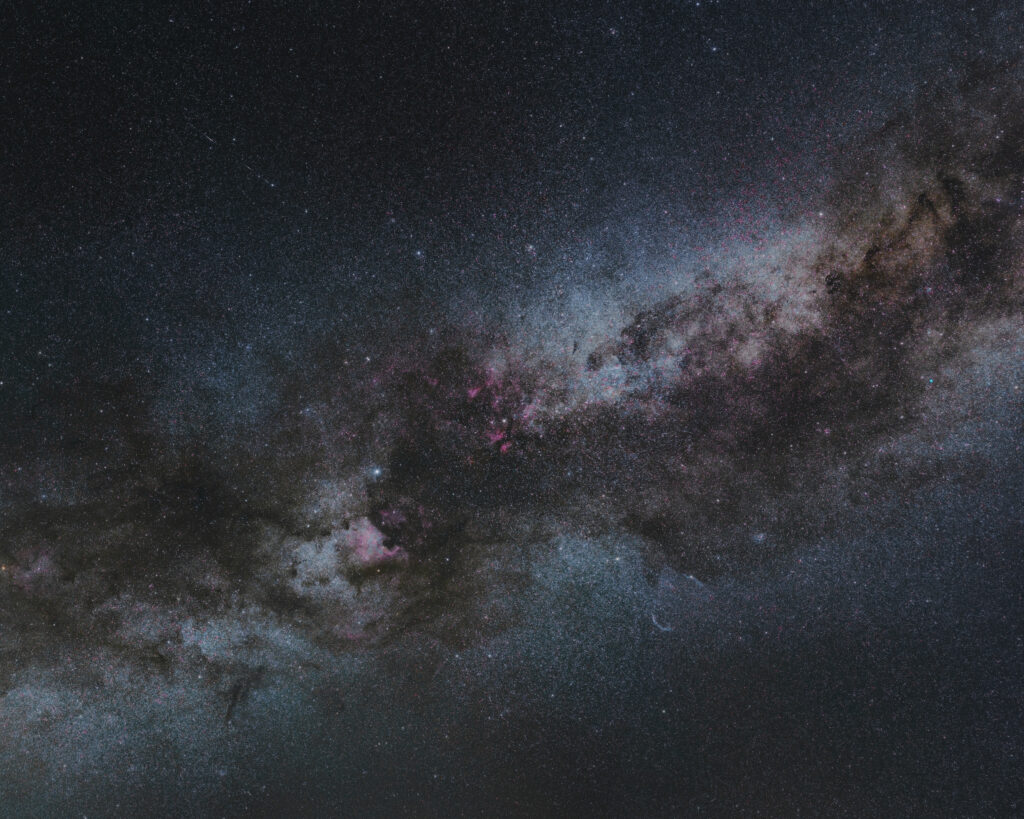
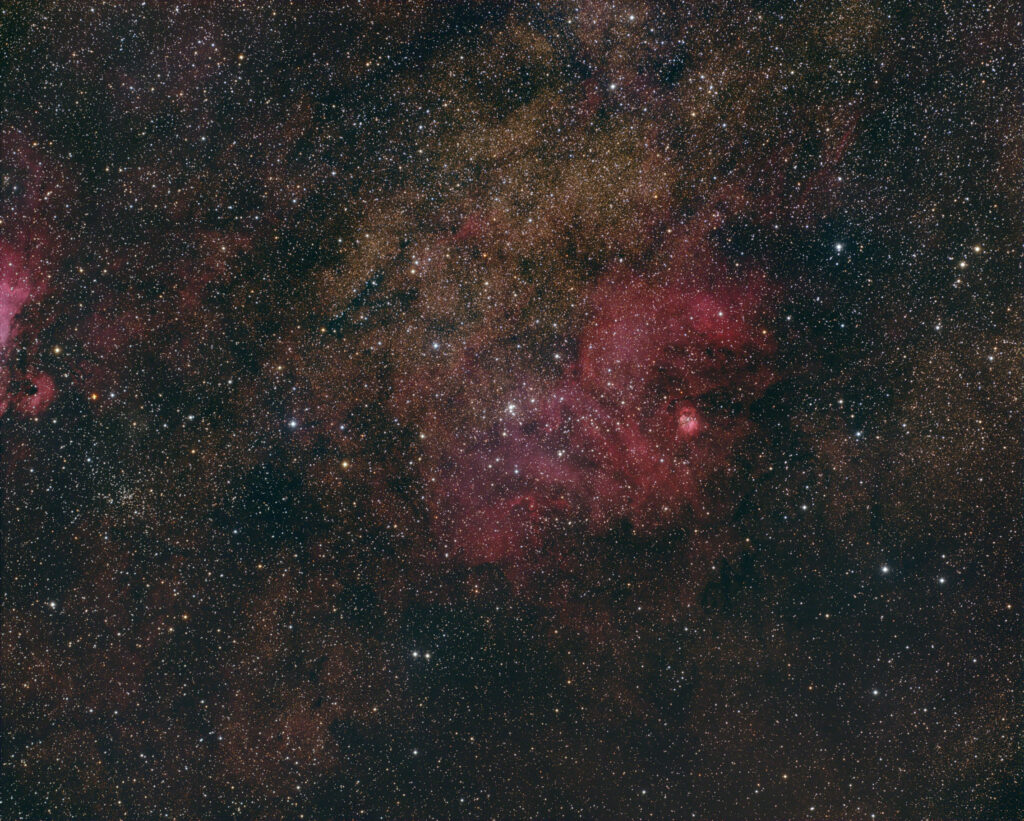





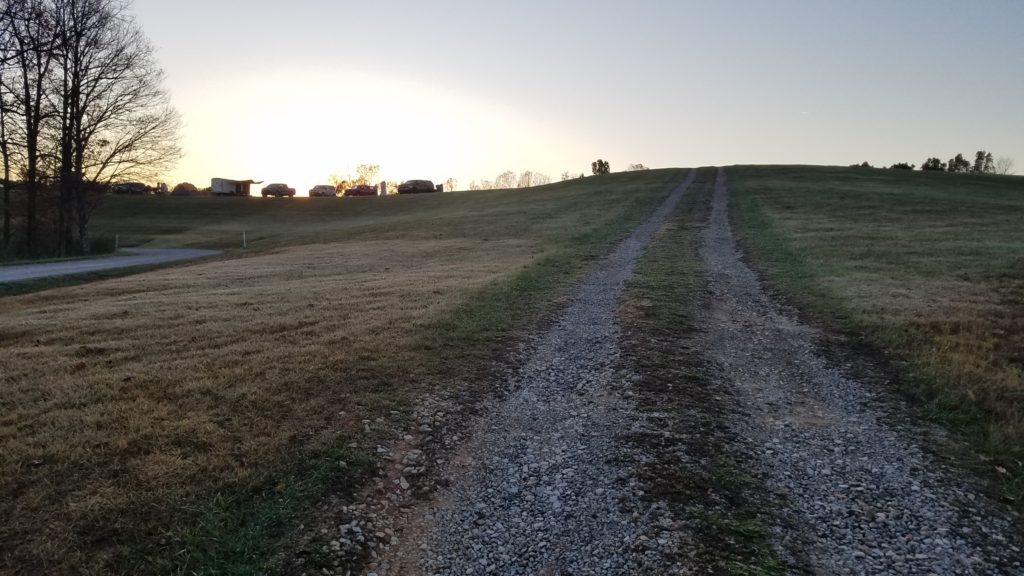
After missing the BFSP at Cherry Springs State Park, PA last new moon we were anxious to get out for one last hurah for the year. Weather looked great initially from midweek into the weekend but rapidly went downhill as we got closer to the weekend. We did however have an amazingly clear Weds night and clear until 3:00am or so on Thursday.
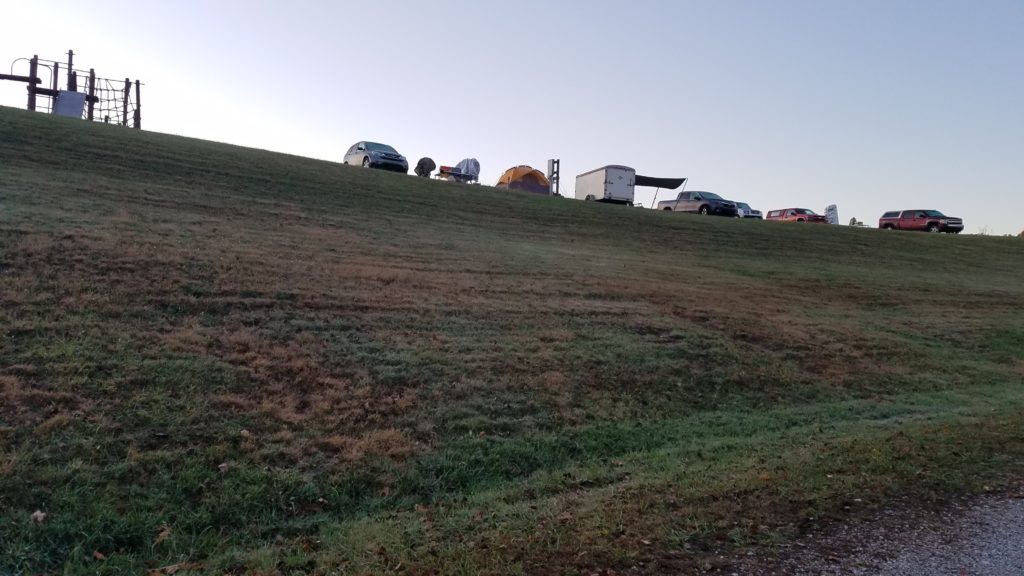
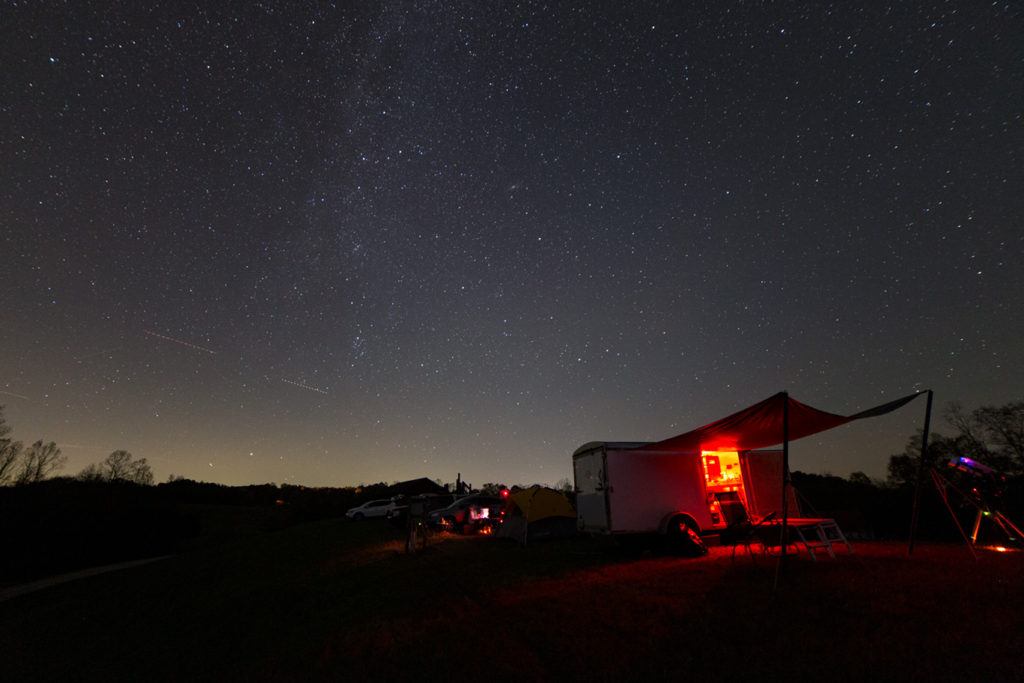
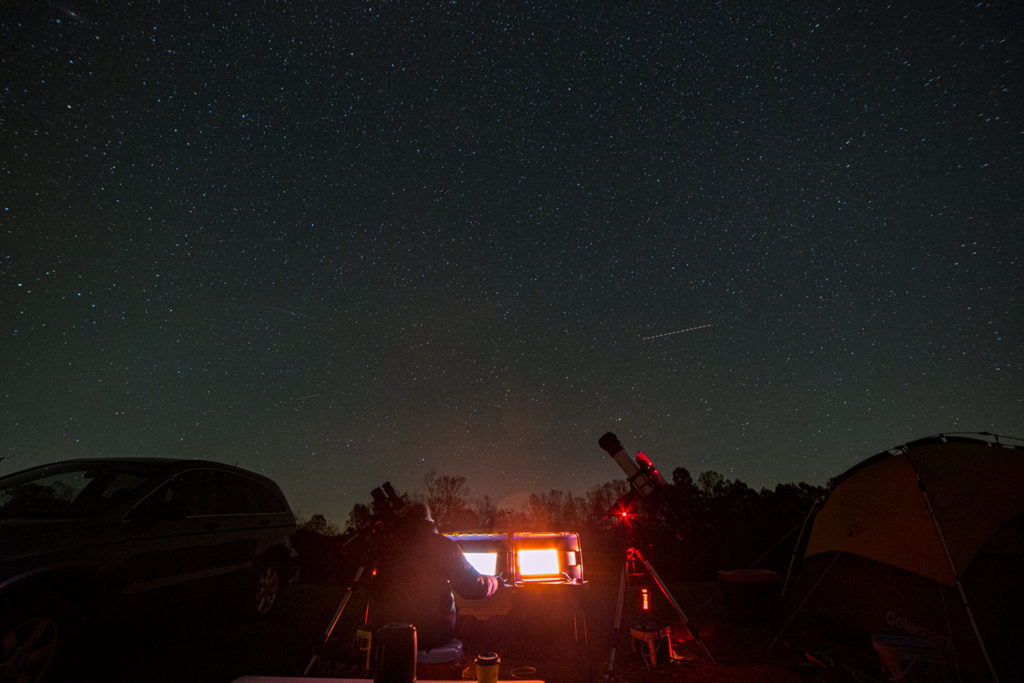
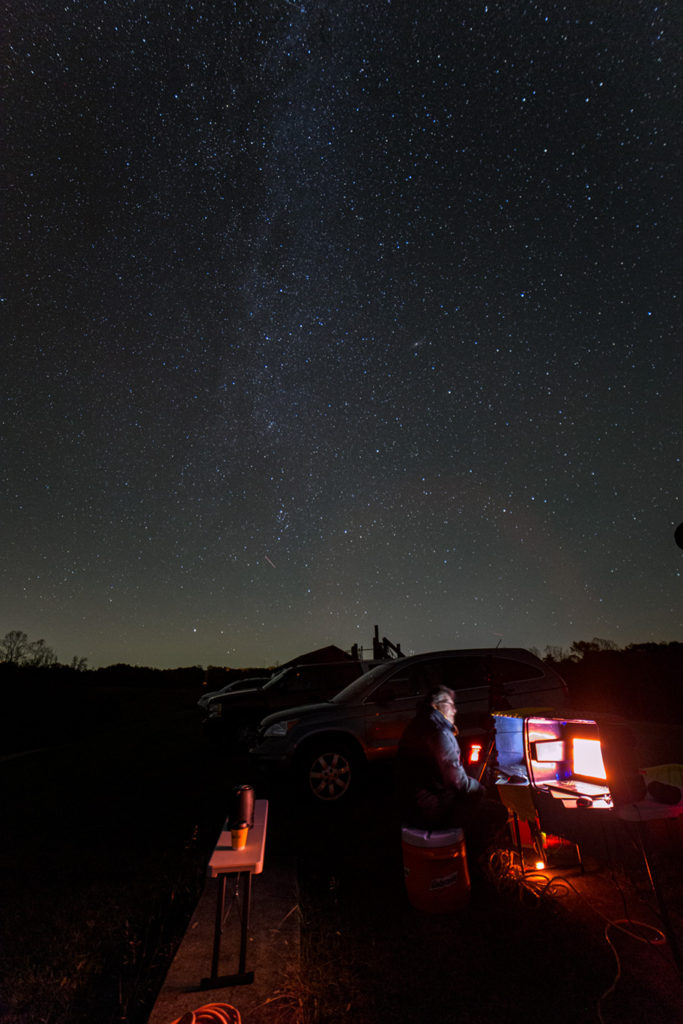

Friday morning arrived with clouds and slightly warmer temps (no frost) than Thursday morning. The sunrise was spectacular.
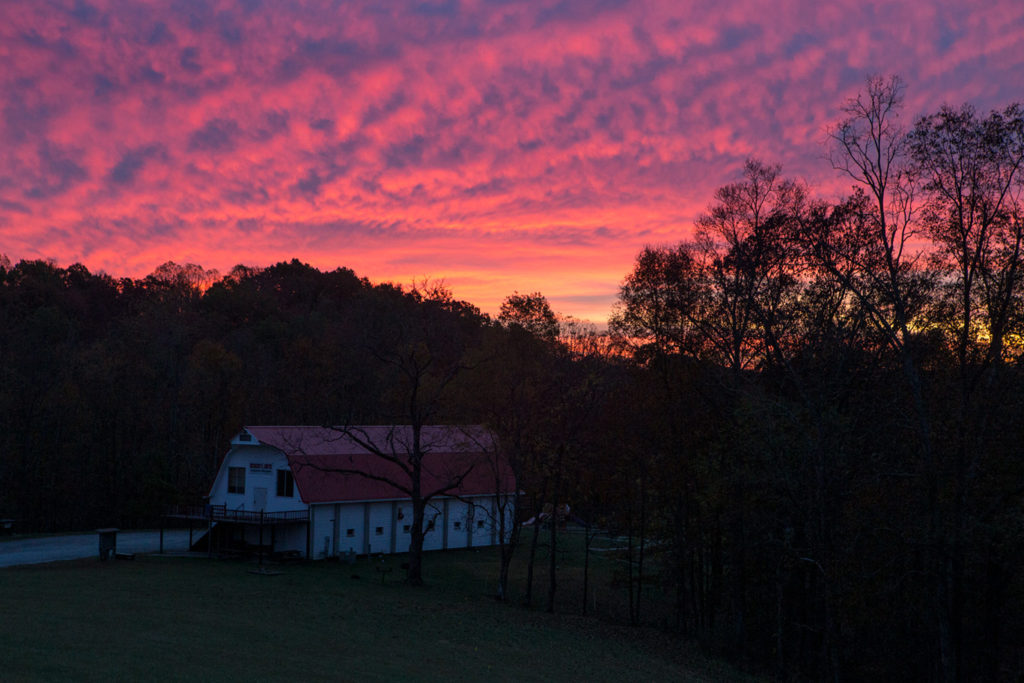
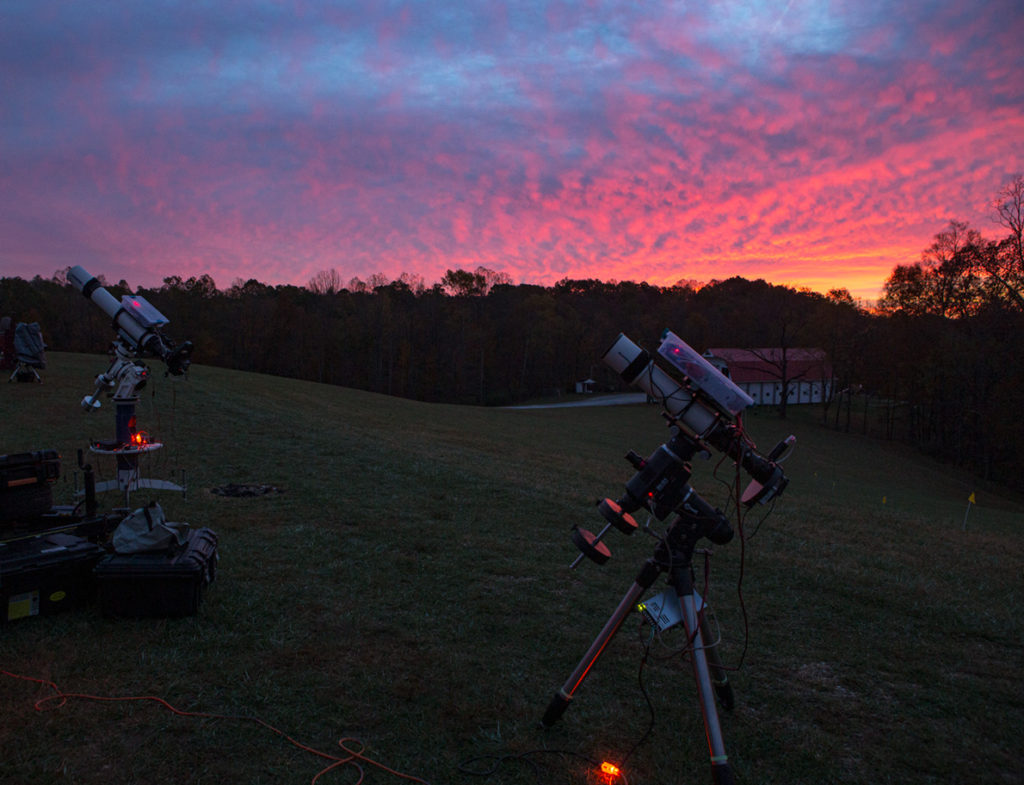

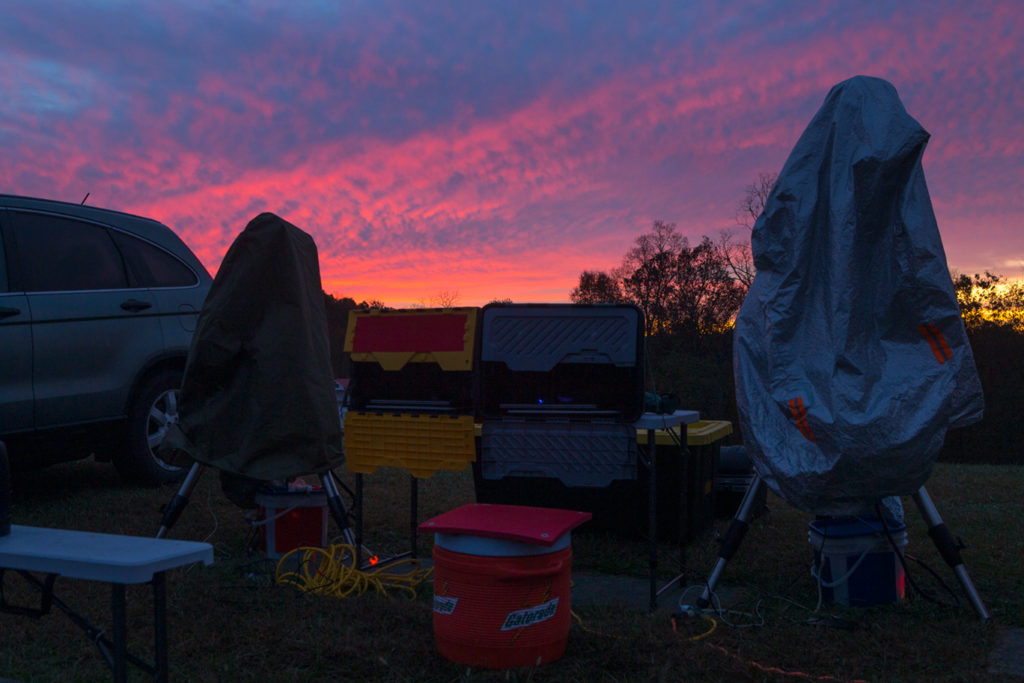
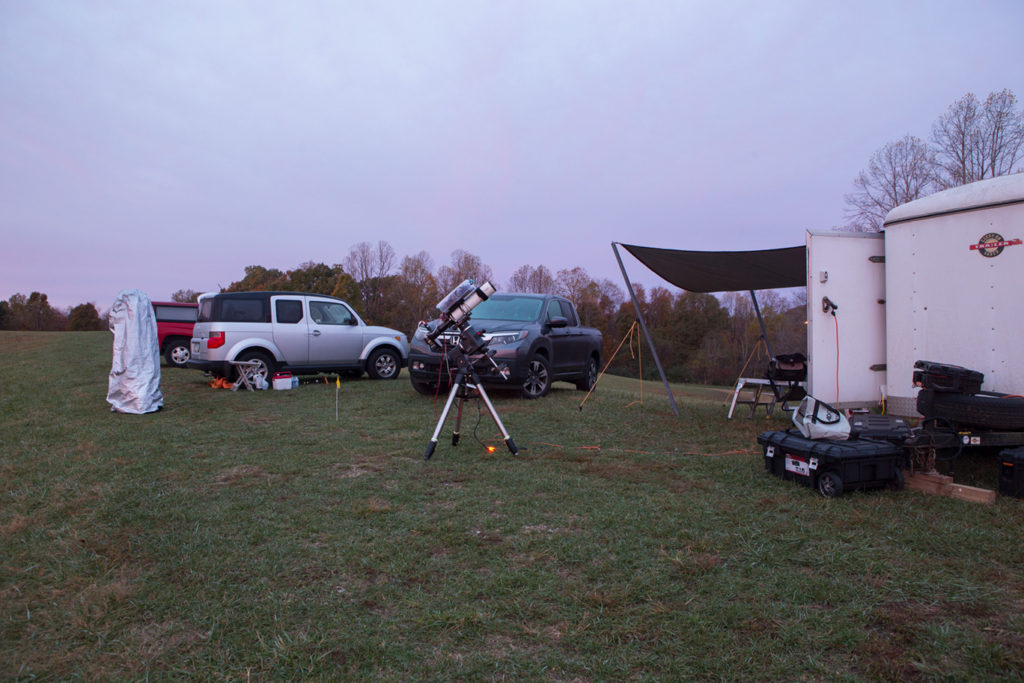
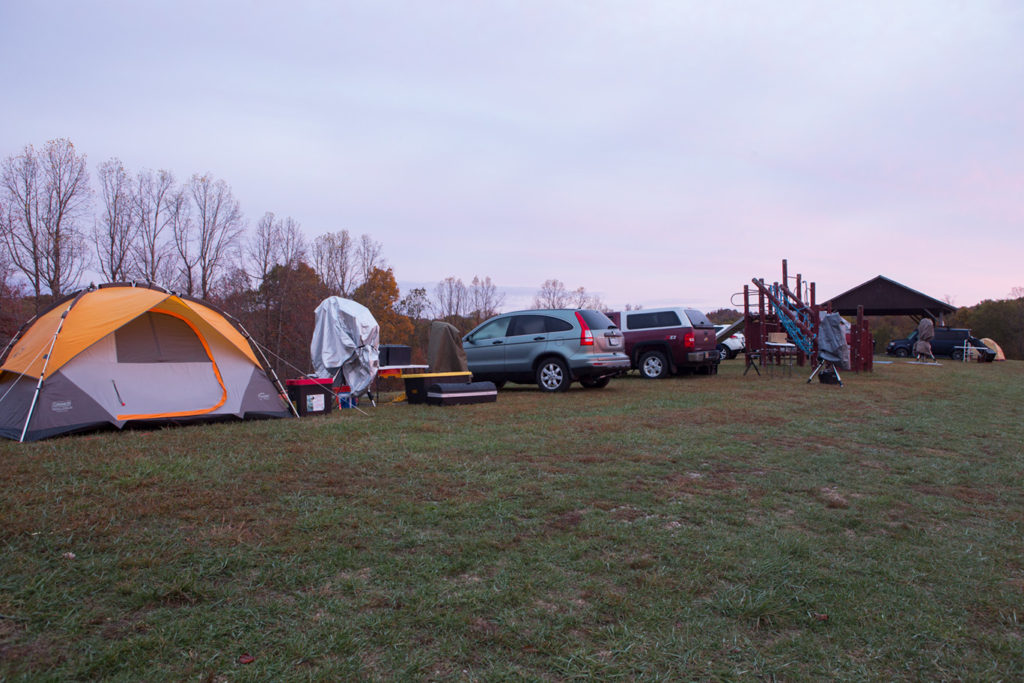
I am not a galaxy imager. I’m at home with short refractors imaging large nebula in our own galaxy. Spring and Fall are more or less galaxy season though if you want to be able to image the same object the majority of these longer nights. So I picked out a decent size bright galaxy and dusted off the long f/ratio 5″ refractor and gave it a try. It’s not without it’s problems but nice to see a 28 year old refractor still collecting photons!
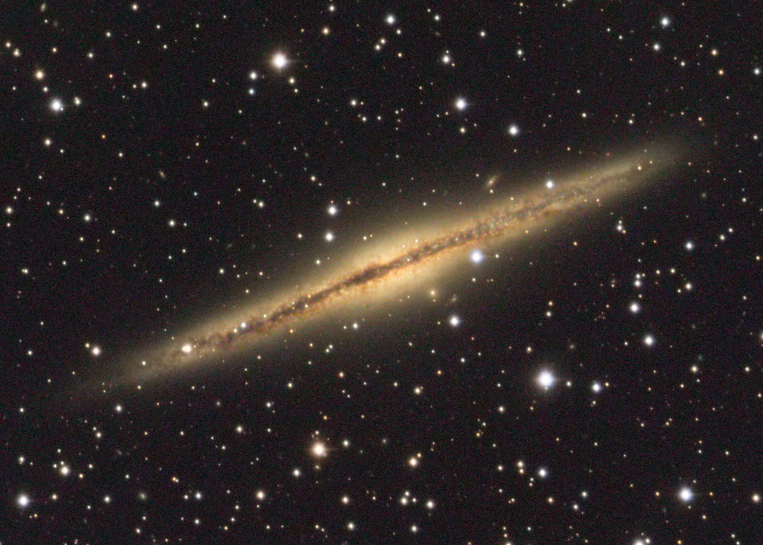
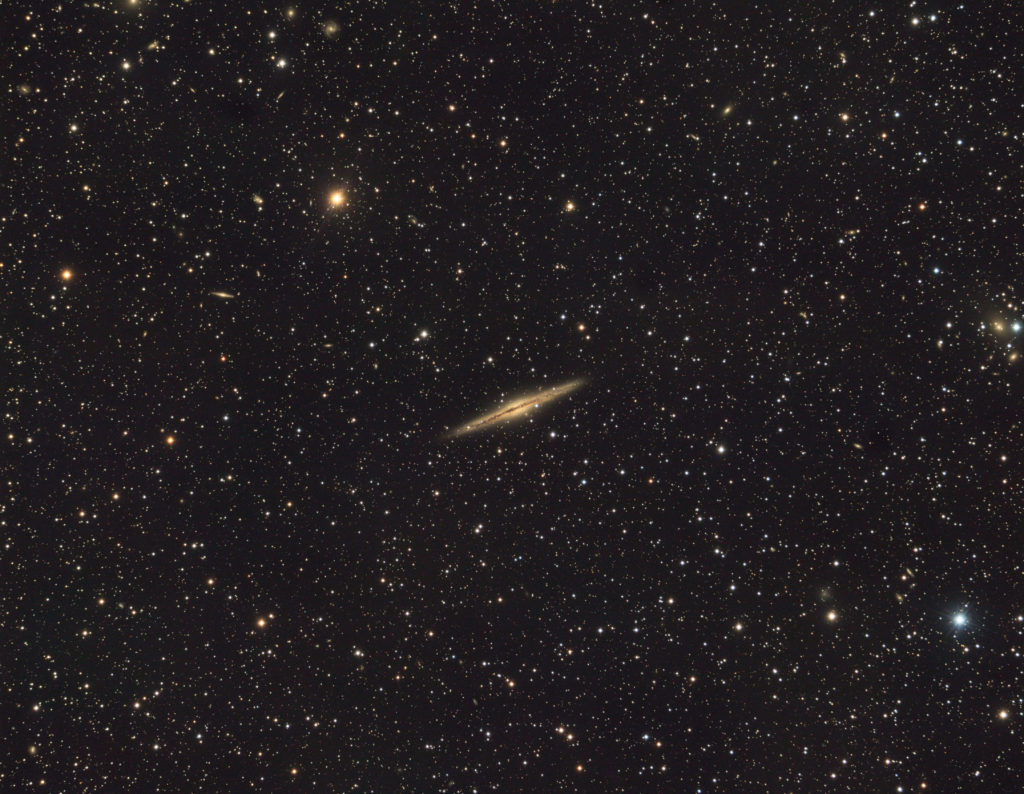
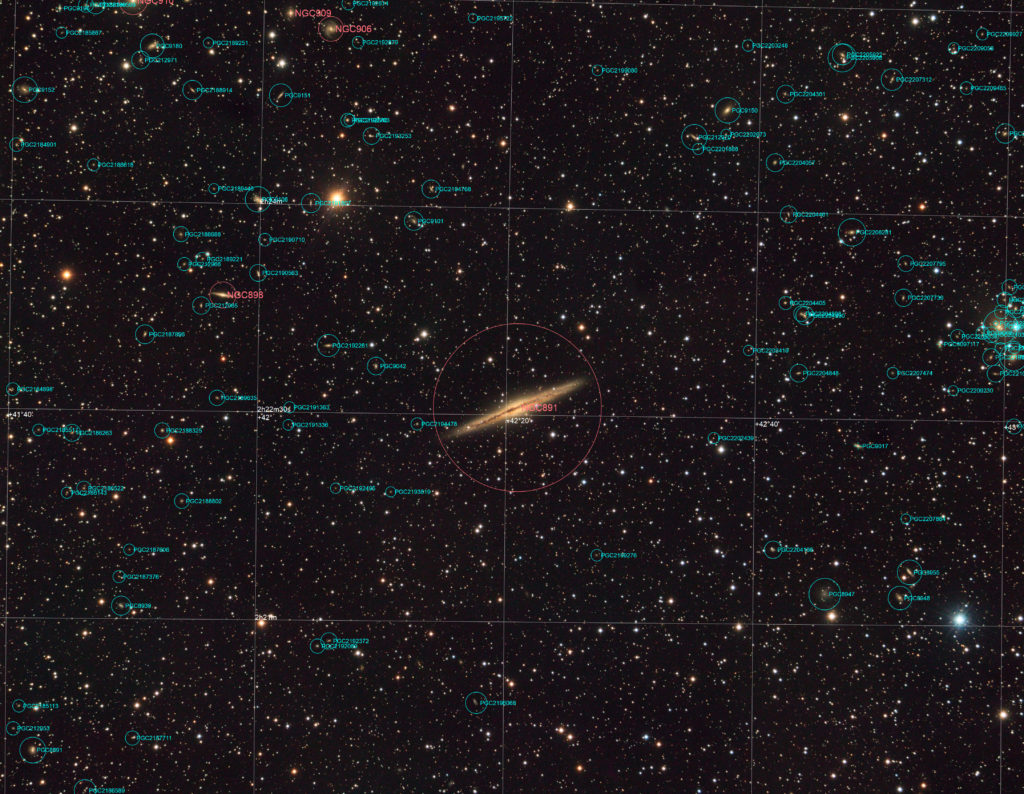
We had some great weather for the annual star party at Pickett State Park, TN last new moon. This star party is still young and looking to grow. The park rangers are doing a great job, it’s a great venue for presentations and a great field for observing / photography. I’m not sure why it still remains a hidden gem of sorts.
Overall sky quality, other than some early clouds, was excellent. With SQM measurements around 21.77 mag/arcsec^2 this was the darkest I’ve seen Pickett. I would note too that of the other dark sky sites I routinely visit, this quality of night is nothing to complain about.

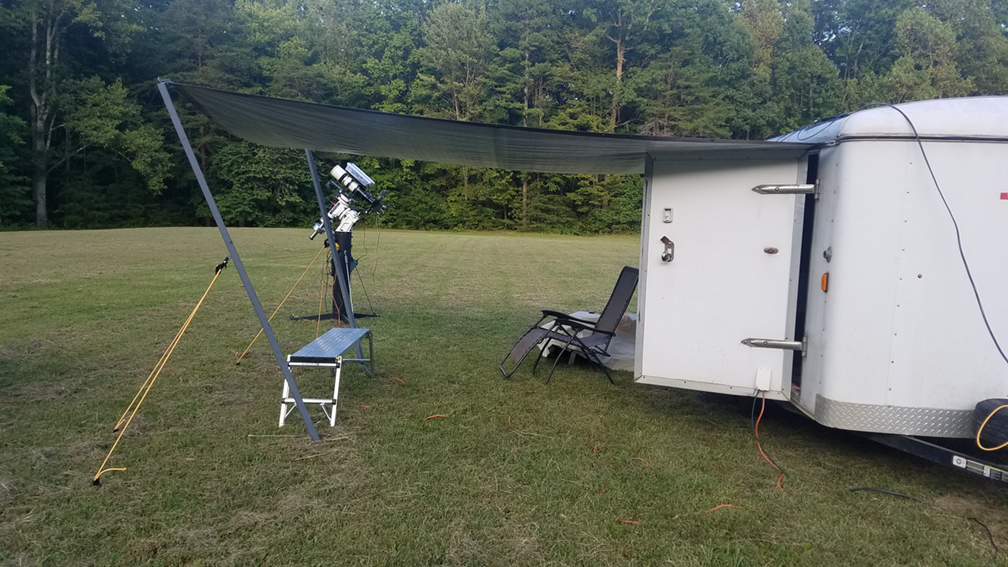
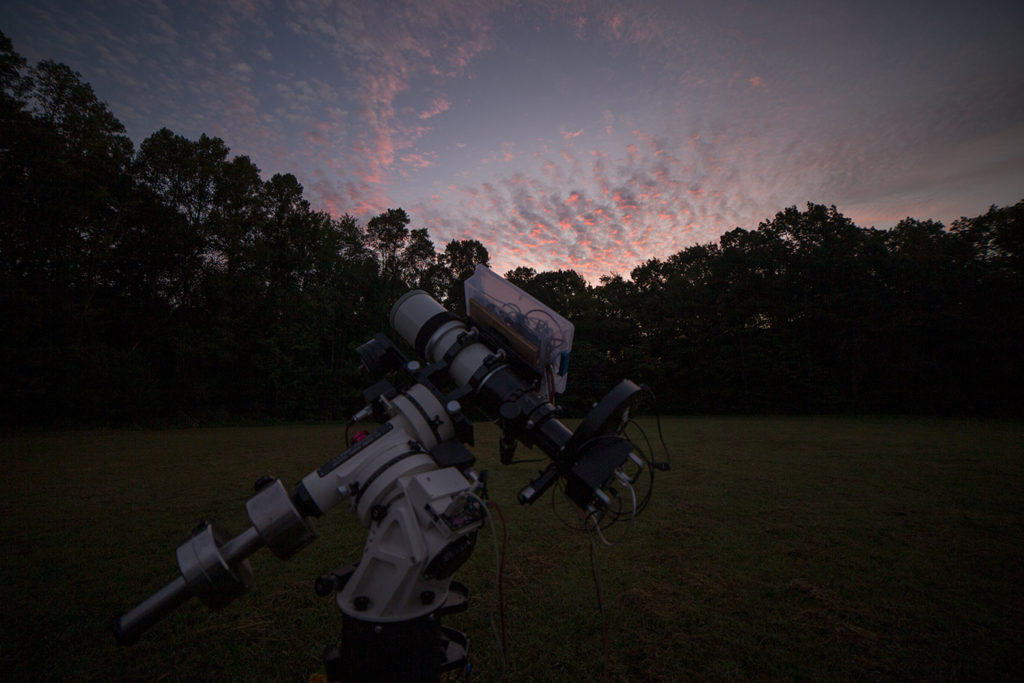
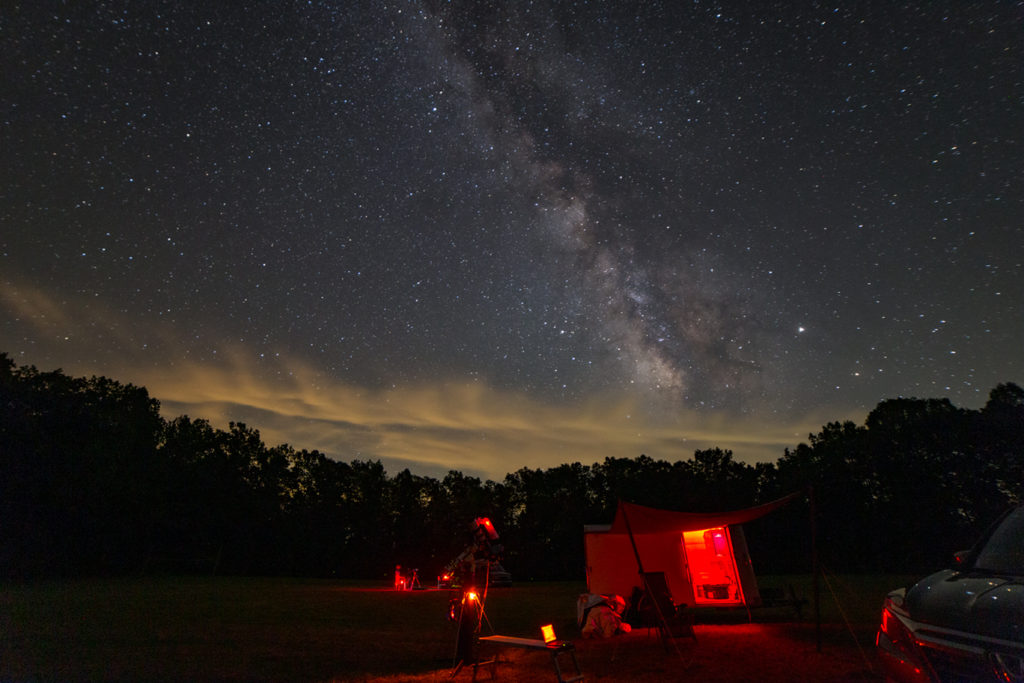
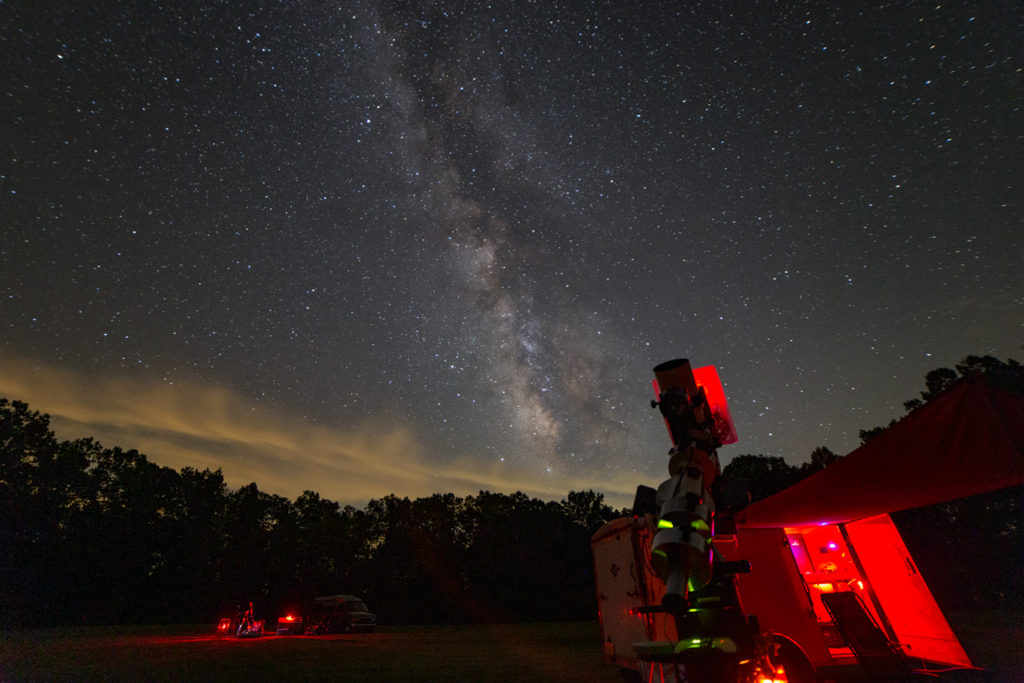
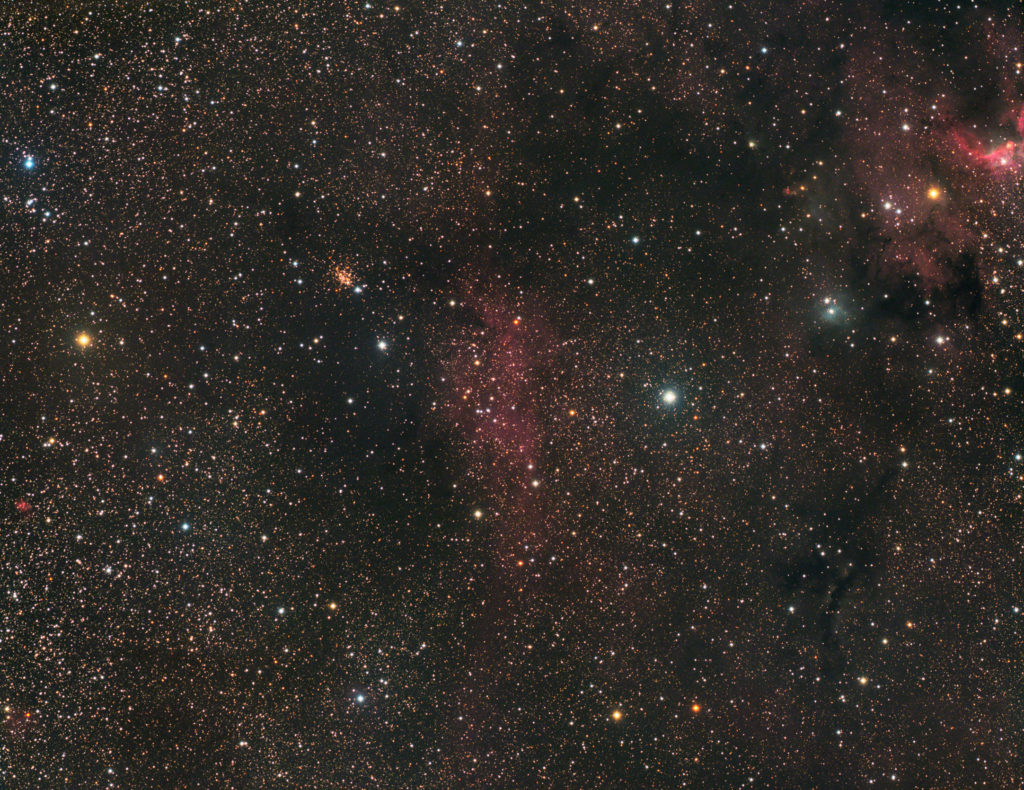
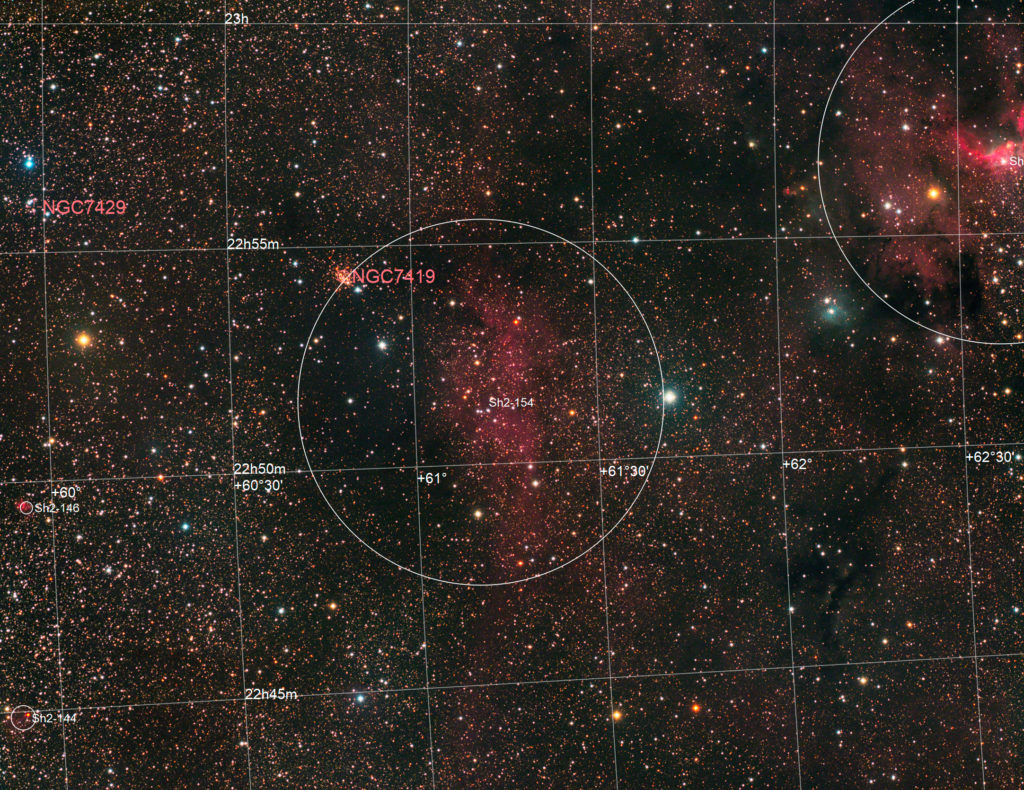
With weather looking wet and wild for the 2019 Cherry Springs Star Party and things looking slightly less soggy at Calhoun we decided to cancel on Cherry Springs and gamble on Calhoun. Good thing we were setup on the top of a ridge so we never had to deal with muddy conditions considering all the rain we didn’t know was coming.
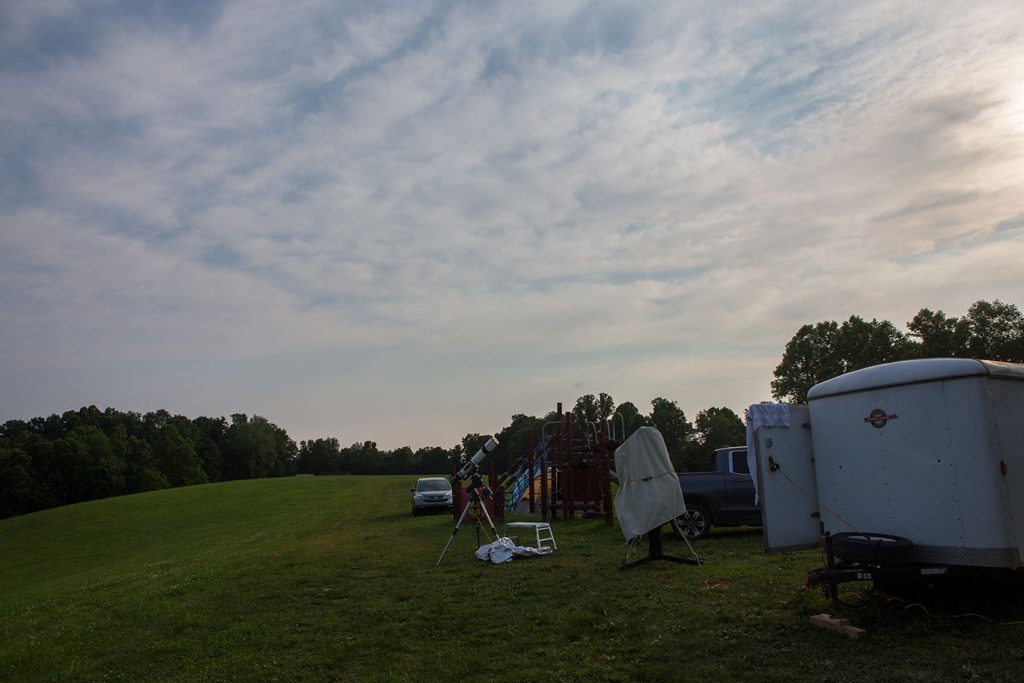
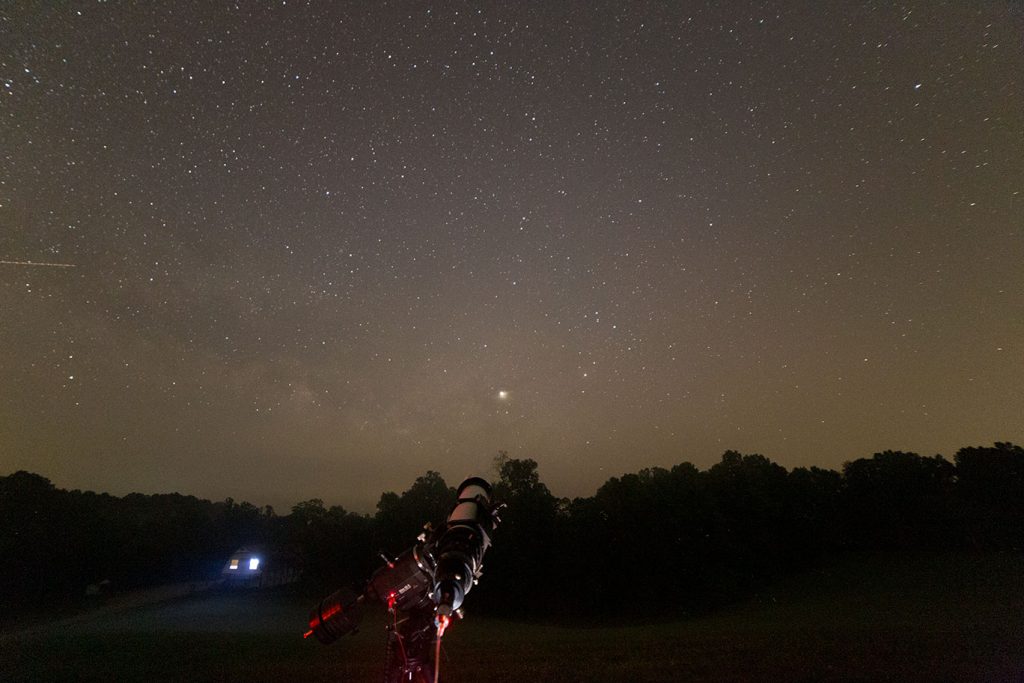
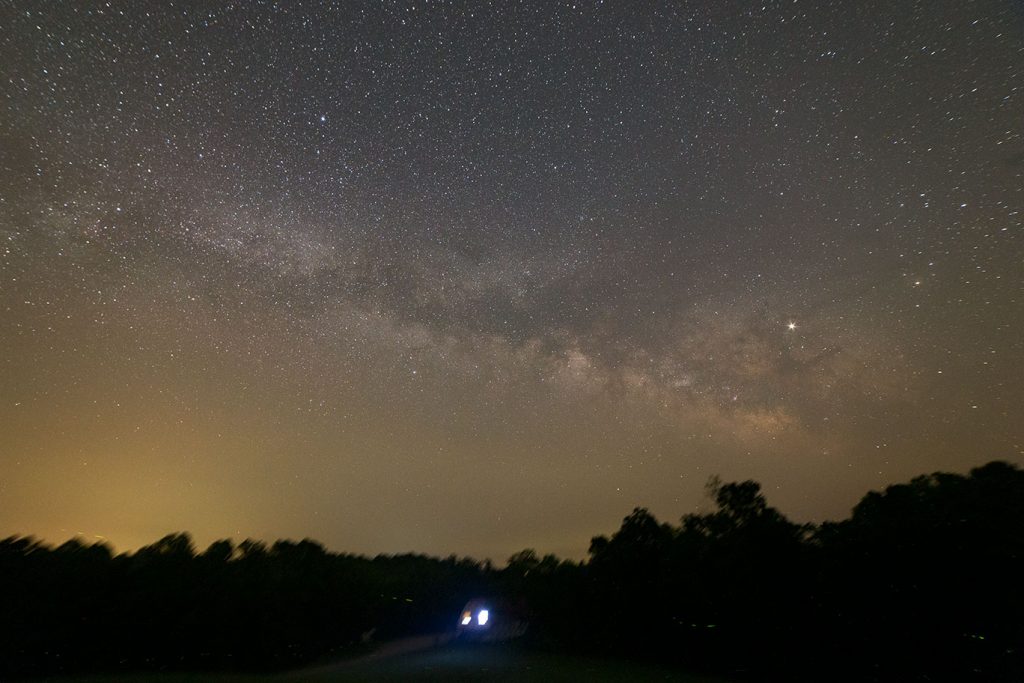
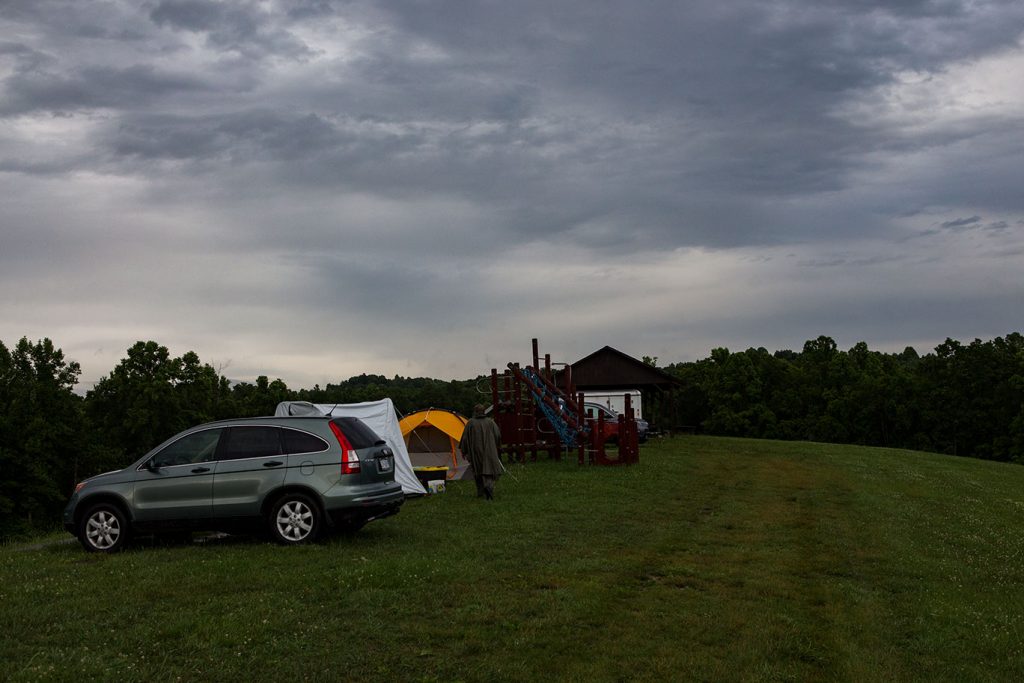
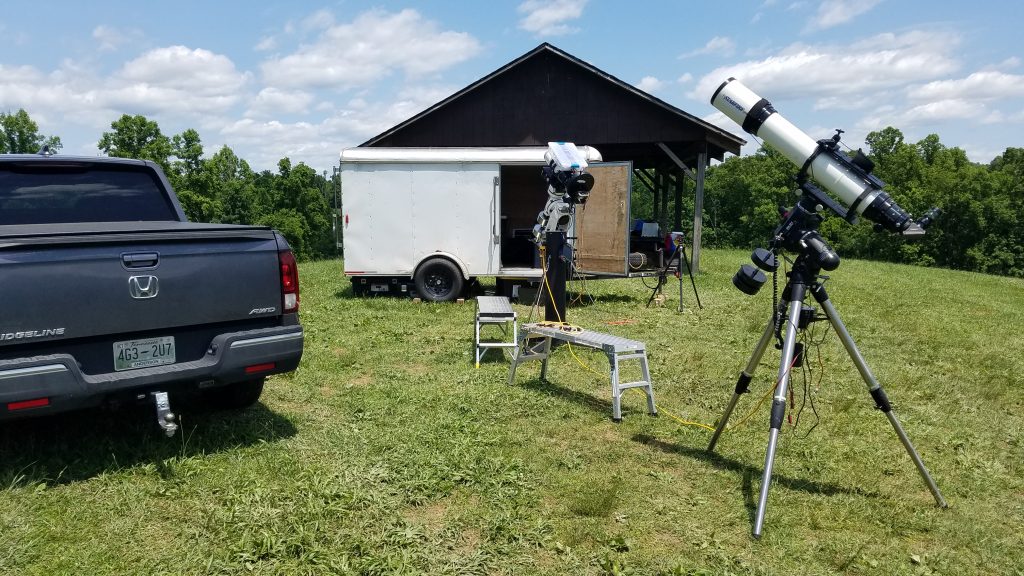
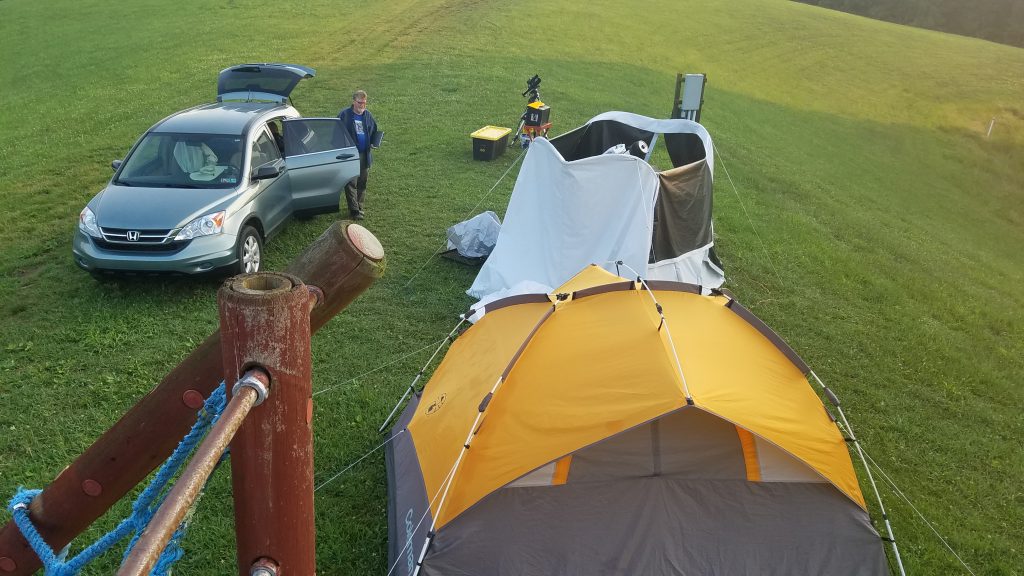
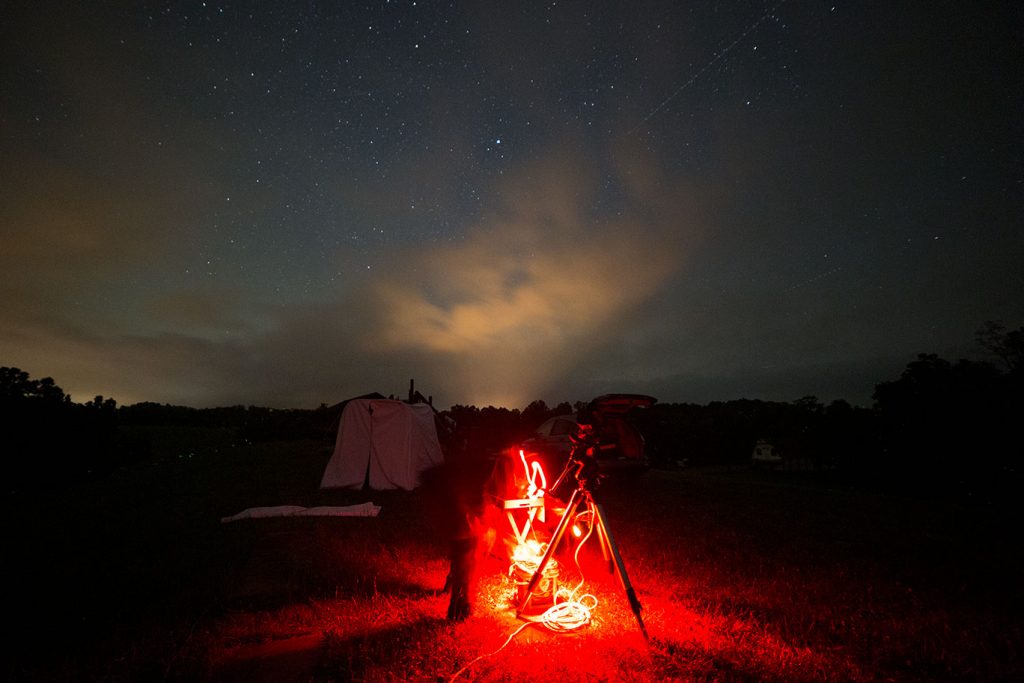
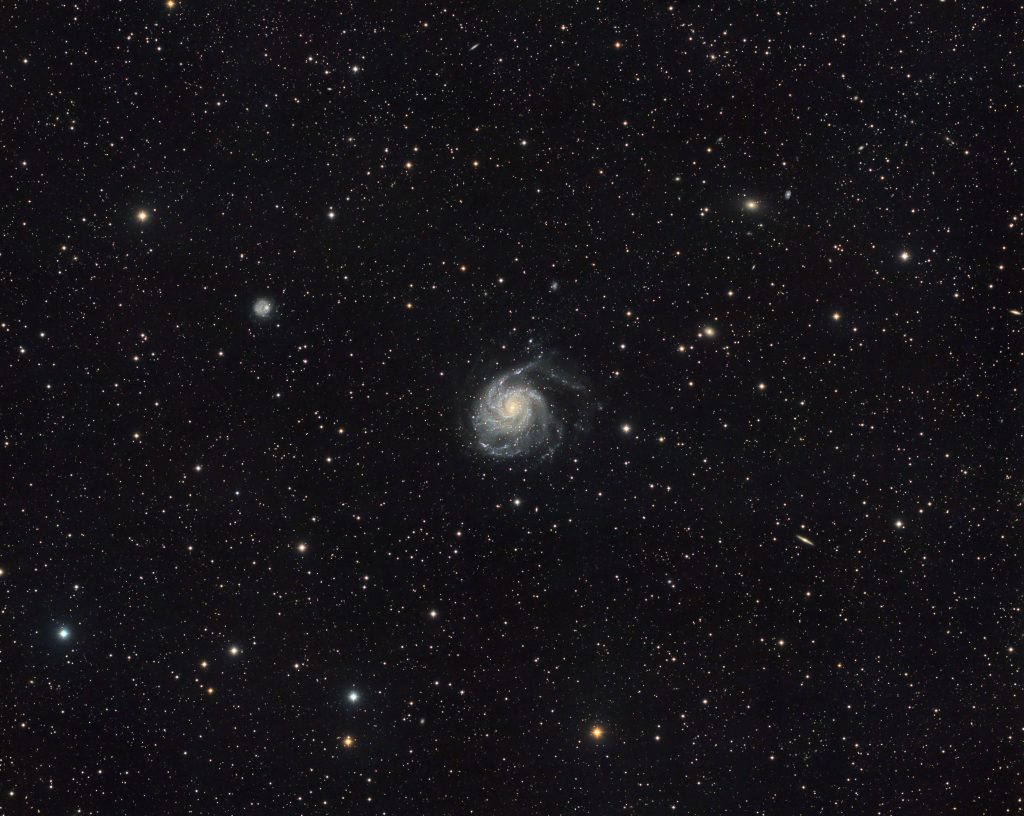
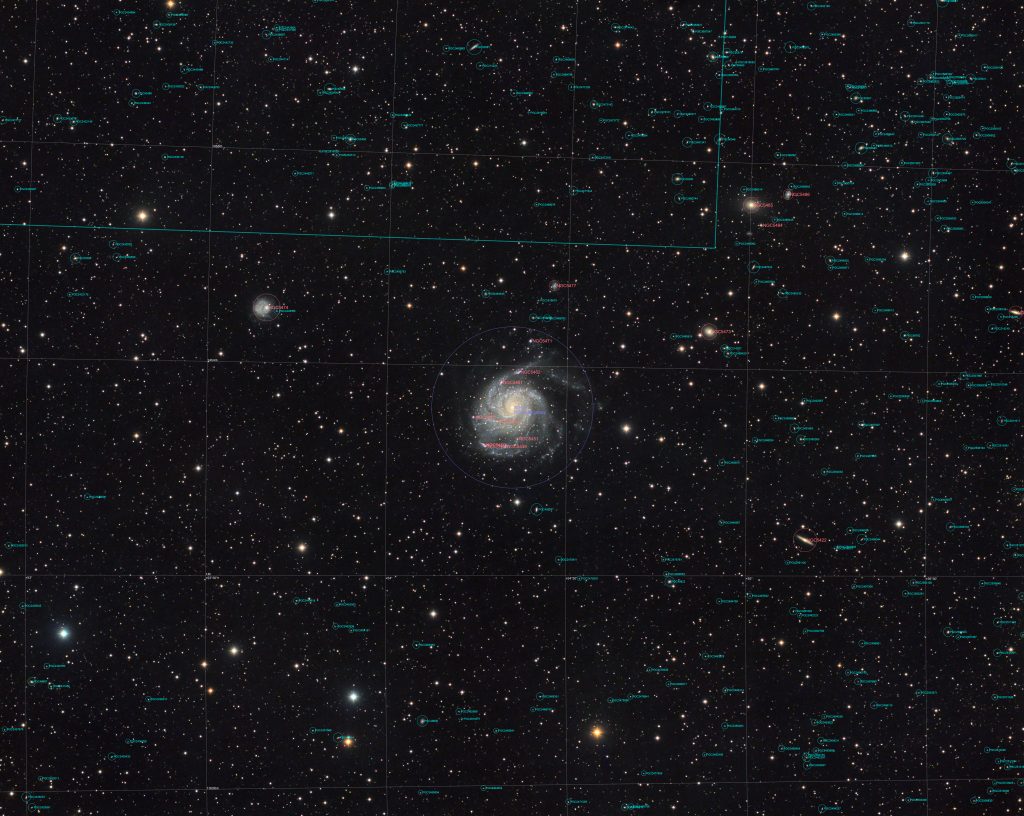
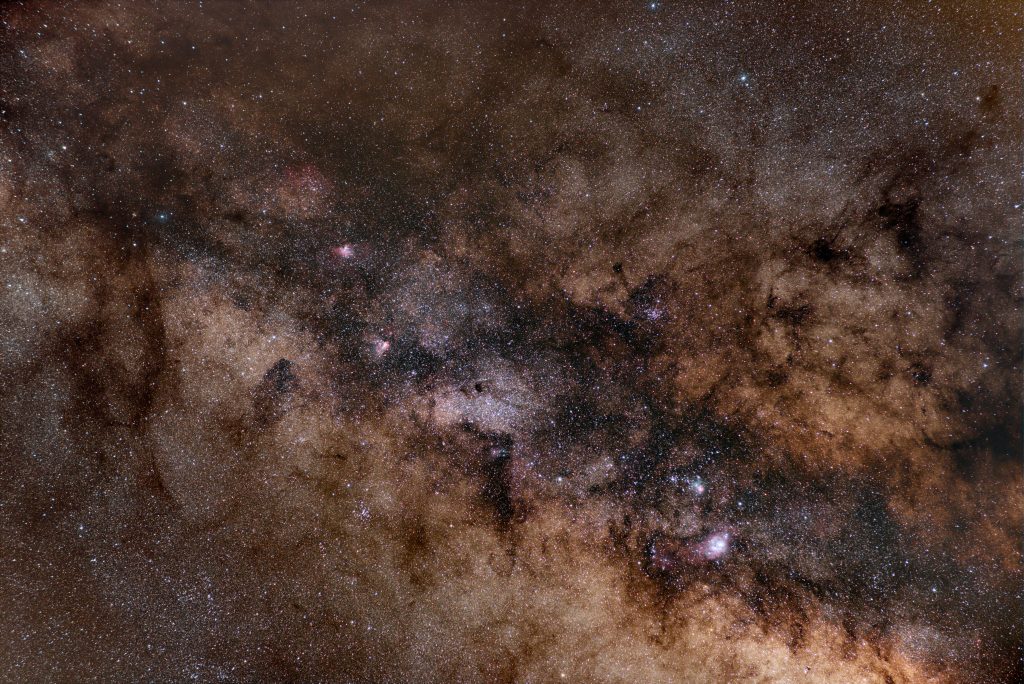
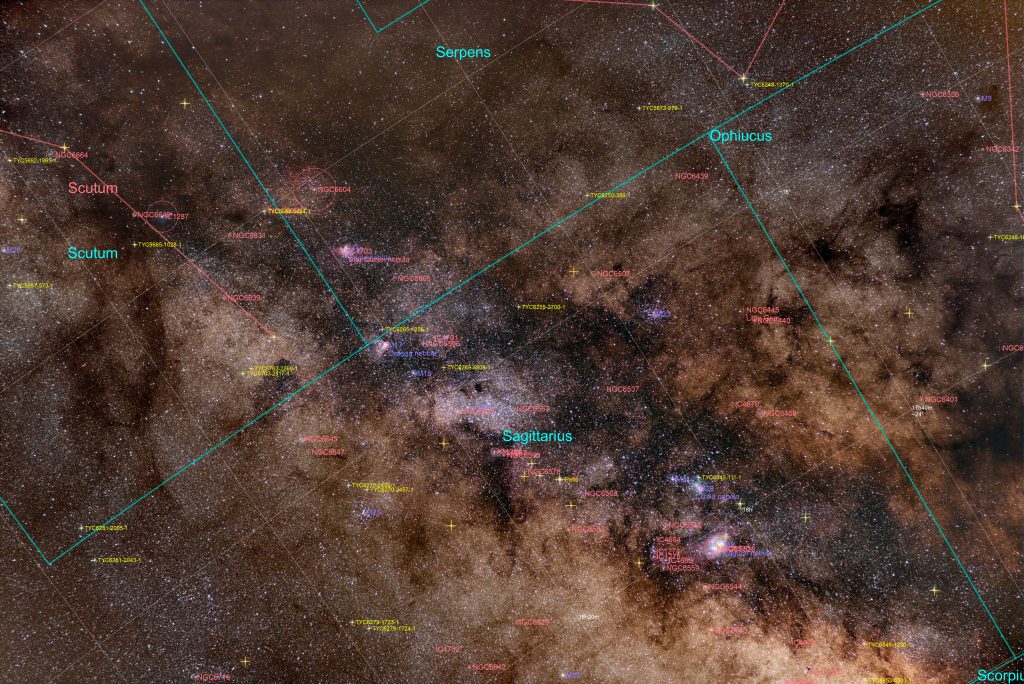
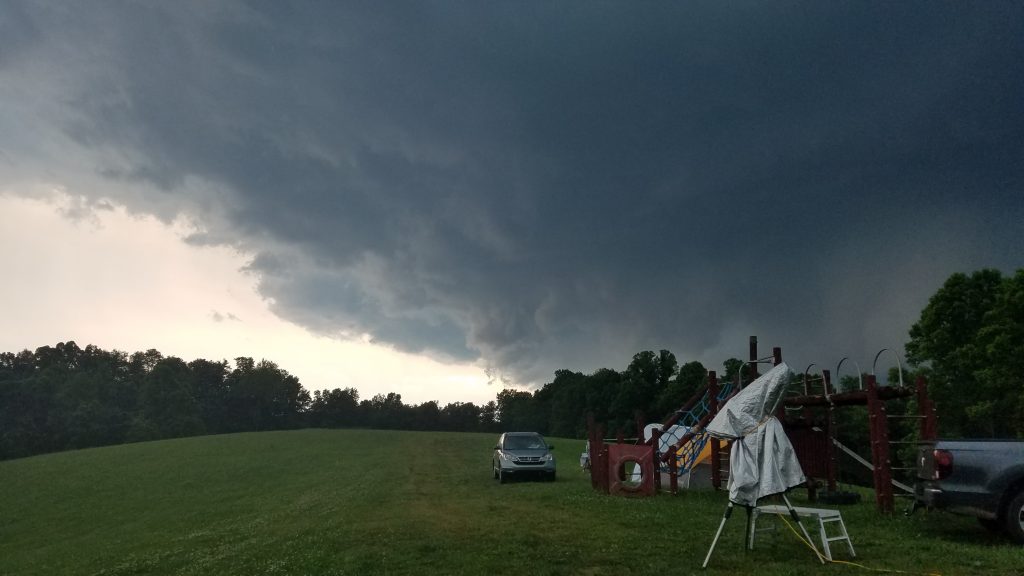
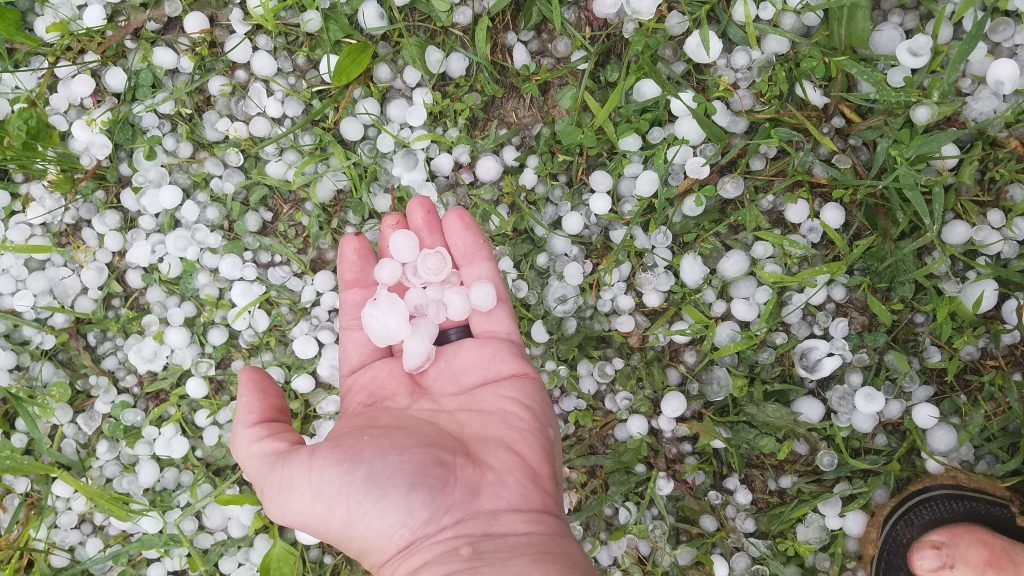
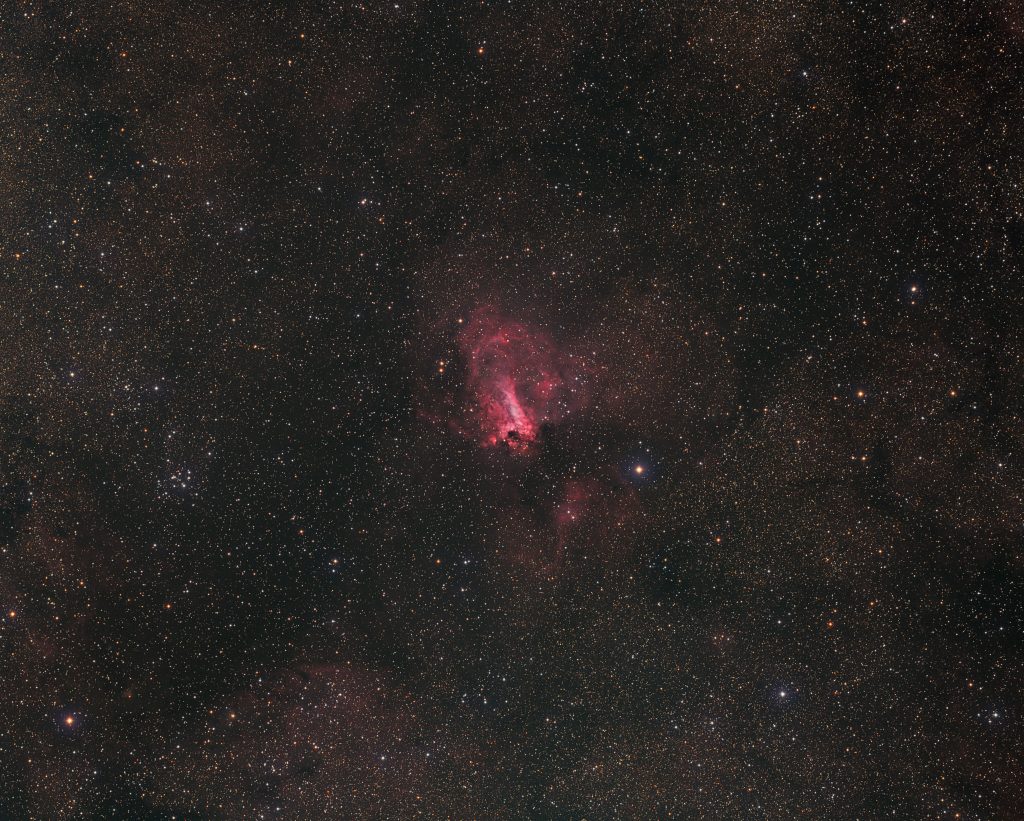
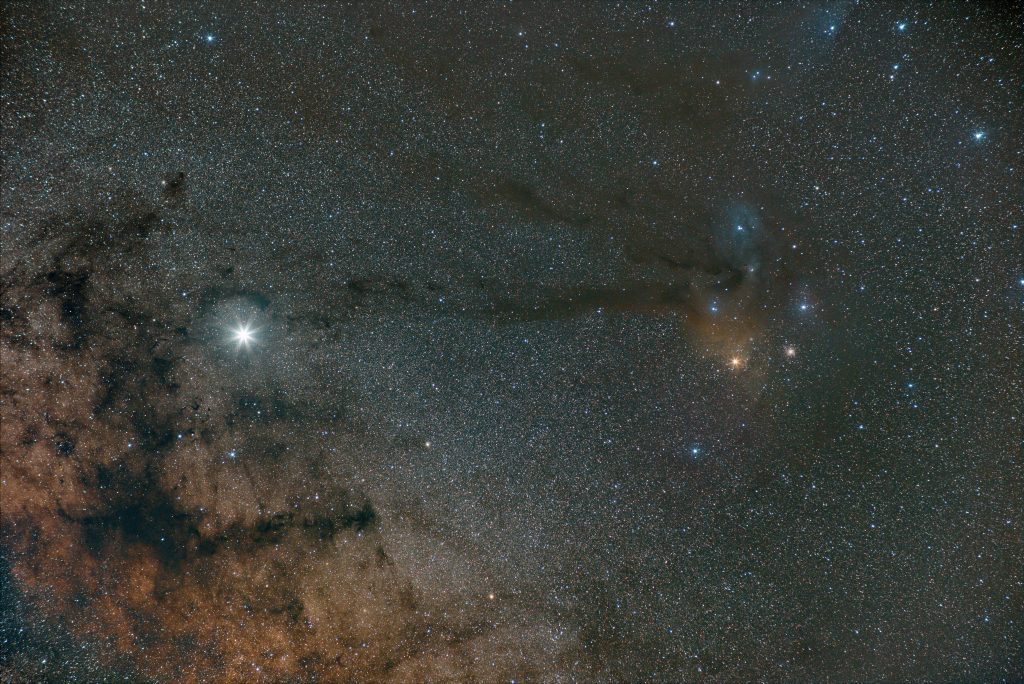
I attended the annual Calhoun County Park Star Party (Oct 5-7) for the first time this year. The sky wasn’t the best it could be. Friday and Sat night both had humidity and dew off the charts with variable fog that seemed to slide up and down the hill but never got so high that it killed observing. I can’t help but think that it impaired the images a little but it may have just been the choice of a faint target during a hazy time of year. Sky quality measurements topped and held pretty steady around 21.6 mag/arcsec^2. I’m sure on a crisp night it would be a little darker. While there were some small light domes on the horizon they weren’t hardly worth mentioning in my opinion. The park was wonderful and the staff was so friendly they even prepared a great meal for us on Sat night. In total about 16 people showed for the party from TN, WV, PA, OH, and KY. Special thanks to Larry McHenry for posting info about the star party and turning us onto this event and Calhoun as an observing site. He typically posts updates on Cloudynights star party forum for upcoming Calhoun events.
Since Calhoun is pretty dark I decided to go after a fainter full spectrum object than I could ever do from home. VdB objects (reflection nebulae compiled by Sidney van den Bergh) are great targets when looking for something off the beaten path but aren’t always what I would call showcase objects. VdB 14 and 15 make for a nice parring here in a rich park of the sky in Camelopardalis.
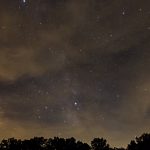
Unfortunately we were mostly clouded out for the star party. From the sounds of it some of the other big star parties going on concurrently were also clouded out. It just wasn’t a good weather weekend for a large portion of the eastern US. Regardless of the clouds, the rangers at Pickett put together some good food and speakers for the event to keep it entertaining. I stayed for only one night and snapped a few pics of the hazy skies with the Milky Way trying to peak through.
I made the 13 hour trip up to Cherry Springs State Park for the Annual CSSP Star Party hosted by the Astronomical Society of Harrisburg PA, Inc. I went up a few days before the star party since it’s always helpful to get a good spot. Those of us that were there early on Monday night were treated to a fabulous night with SQM measurements >21.9! Overall it was an amazing streak of clear weather for PA with a total of 4 imaging nights. I was hoping for one or two so as not to set my expectations too high so I was very pleased with four nights!
I even did a little visual at low power with a 4″ refractor. LDN 1795 (large 50’x50’dark nebula in Scorpius) looked absolutely amazing to me at 19X. First time I had a WOW moment visually.
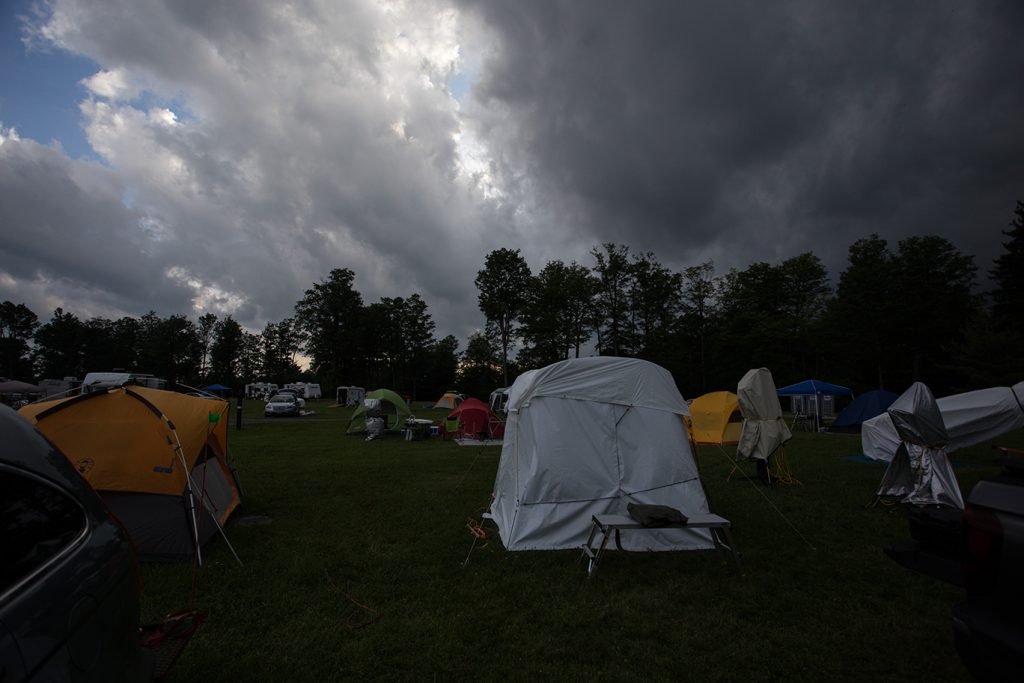
Just Some Slightly Concerning Weather Passing Through
Everything is buttoned up and locked down. Luckily it skirted us to the North.

B312 on the Edge of Sagittarius and Scutum
Canon 6D @ ISO 3200
Canon 70-200mm f/2.8 @f/4
8x240sec Exposure

M8 & M20 Nestled Among the Stars
Canon 6D @ ISO 3200
Canon 70-200 f/2.8 @ f/4
10x240sec total exposure
A couple images from last years 2017 CSSP that I finally got around to looking at. It wasn’t a very productive astrophotography trip but enjoyable none the less.
If you’re going to come to a star party like this please follow the rules and don’t be a rude jackass like the following guy. We all understand and tolerate some light issues, car alarms, and emergencies but when you light the place up over and over without any regard for your neighbors I would suggest staying home and not ruining everyone else’s vacation!
I was the first one to arrive for the star party on Saturday night at Look Rock South. It’s a beautiful view to the south looking into the Smokies.
We definitely had some clouds for the beginning of the night with some sucker holes now and then. I was never able to get off a 20 minute shot without the clouds rushing in within 10 minutes…
But things finally started to clear up and the Milky Way really started to pop out.
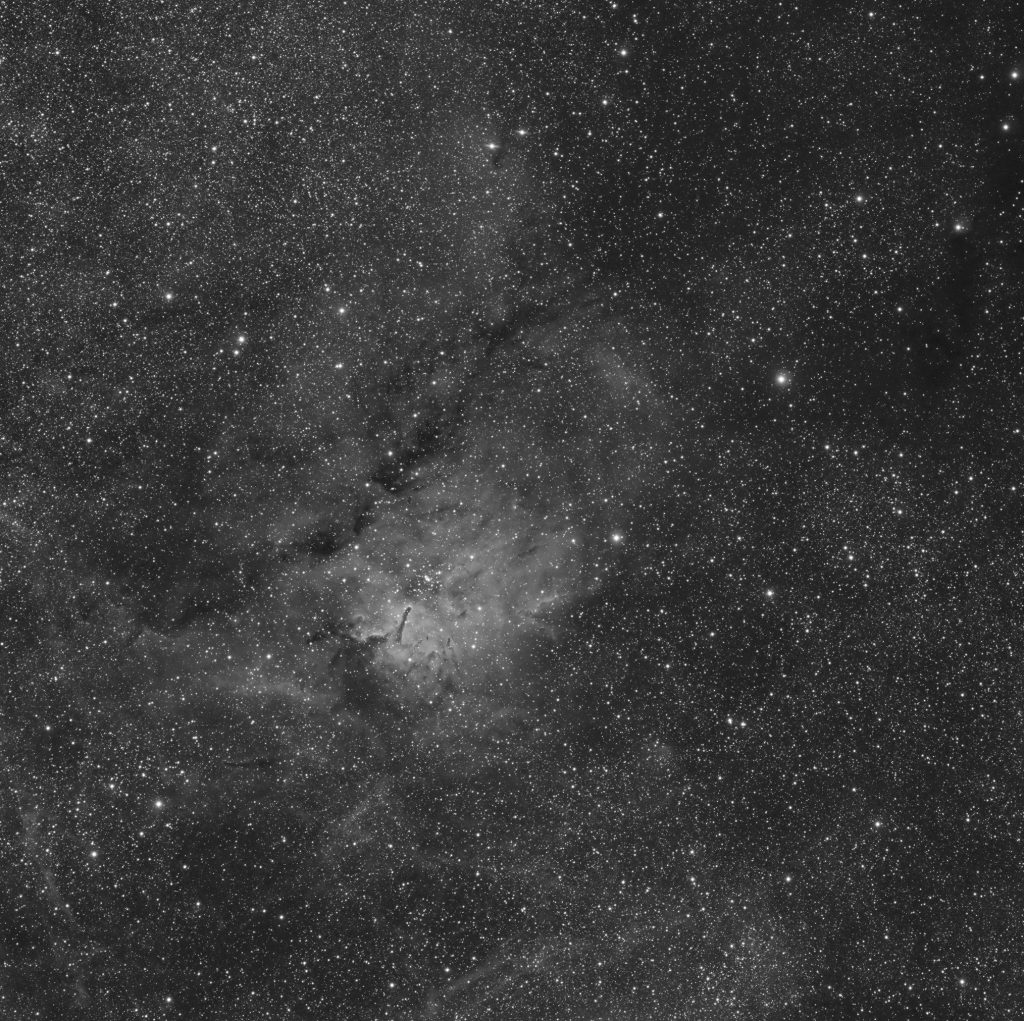
Emission Nebula NGC 6820 or Sharpless SH 2-86. AP130GTX with Field Flattener Custom 4″ OAG Apogee U16 CCD w/Baader Ha 7nm filter AP900GTO Mount 9x20min Exposures Image Scale 2.16 arcsec/pixel; reduced to 4.32 arcsec/pixel
Once it was cleared up I was off to take some test shots and validate the portable rig was ready for more serious projects. NGC 6820 AKA Sharpless SH 2-86 and all the surrounding emission and dark nebula has always been a favorite of mine. It’s located in Vulpecula not that far from M27, the Dumbbell Nebula. It reminds me of a less popular M16 with it’s gas and dust pillars and dark globules. Open cluster NGC 6823 resides in the midst of the nebula and is about 6,000 light years away.
Just getting around to publishing some pictures from the 2016 Black Forest Star Party at Cherry Springs State Park in Pennsylvania. What a great stretch of weather for PA! The nights weren’t the darkest or most transparent (SQM 21.4-21.5) nights I’ve had at CSSP but clear and a little murky was way better than the alternative after driving up from Knoxville TN. Had a great time with some old friends and good to see some old club members too.
Had a few imaging problems related to dithering and settle time / settle criteria that made me lose a fair number of shots but I got two images which, I have to be honest, I’m not real pleased with. They are however, more challenging objects, but would have come out better had the sky conditions been closer to the SQM 21.8 that I’ve seen before at CSSP. But, we take whatever quality of clear sky we can get during a pre-planned star party!